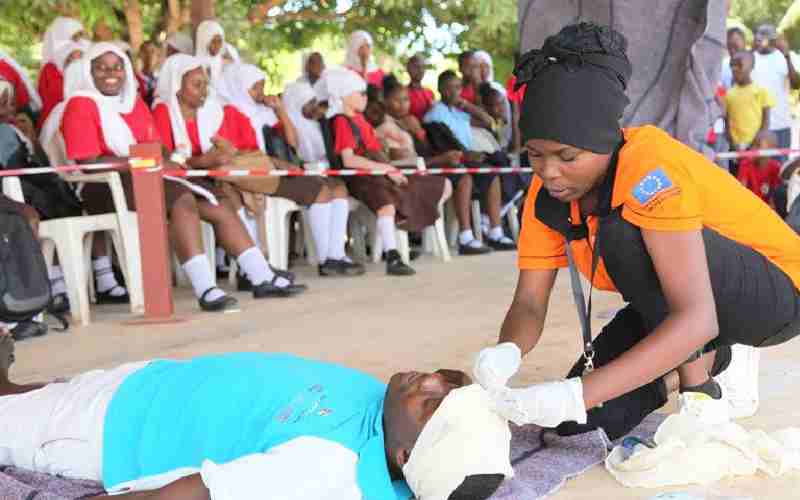×
The Standard e-Paper
Stay Informed, Even Offline

Participants in a First Aid competition in Kwale County.[Maarufu Mohamed,Standard]
The incident of a Danish player, Christian Eriksen, collapsing in the pitch during a football match against Finland in the ongoing UEFA Euro 2020 was chilling, to say the least. It took the swift action of his captain, Simon Kjaer, to resuscitate him. Doctors averred that it was these first few seconds that saved his life.